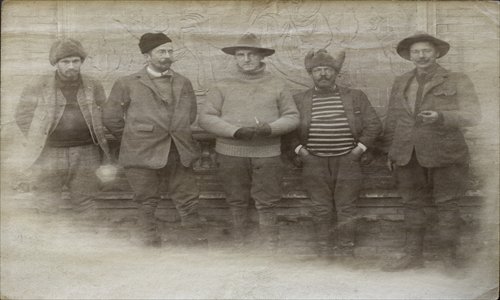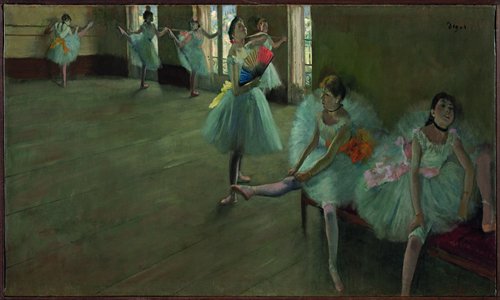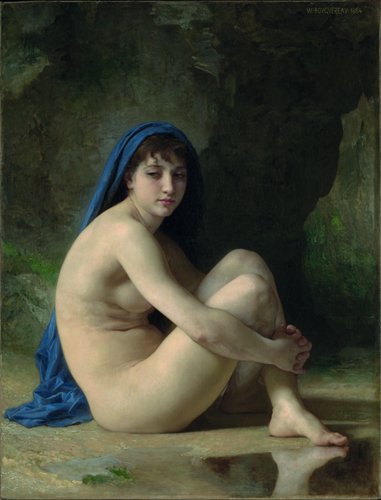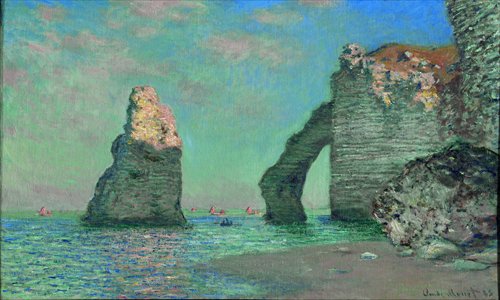Clark collection in China
In the early 20th century, Robert Sterling Clark, heir to American sewing machine manufacturer Singer Corporation, moved to Paris and soon found his lifelong passion for Western art. In the following decades, Clark and his wife, Francine Clary, amassed a stunning collection of 19th century paintings.
A total of 73 of those masterpieces are now on display at the Shanghai Museum in an exhibition entitled Barbizon through Impressionism: Great French Paintings from the Sterling and Francine Clark Art Institute.

Robert Sterling Clark (second from right) and his fellows during the expedition in China
The Sterling and Francine Clark Art Institute in Williamstown, Massachusetts, is an art museum and a center for research and higher education in the visual arts that was founded by the Clarks in 1955. It was set up to keep and display the Clarks' extensive collections to the public.
According to Michael Conforti, the current director of the institute, the core of the Clarks' collections focuses on European and American paintings, master prints and drawings, English silver, and porcelain.
"Their collections are best-known for Impressionist paintings, especially the more than 30 works by Pierre-Auguste Renoir," Conforti said.
The exhibition at the Shanghai Museum includes 22 of Renoir's paintings, seven works by Claude Monet and also includes pieces by Édouard Manet, Camille Pissarro and Edgar Degas.

Dancers in the Classroom by Edgar Degas. Photos: Courtesy of Shanghai Museum
Richard Rand, senior curator of paintings and sculpture at the Clark Institute, told the Global Times that the 73 paintings on display give visitors a strong overview of French art from the 19th century. The exhibition features not only Impressionist paintings, but also representative works from other contemporary movements like the Barbizon school and Naturalism, including the works of Camille Corot and Jean-Francois Millet.
"The 19th century is a big period of change and innovation of Western painting, representing the birth of modern art," Rand added.
Rand explained that visitors to the exhibition will be able to see the innovation in subjects and artistic techniques in European painting "from the traditional themes and styles in orthodox academic schools to the ground-breaking works of Impressionists who took the drawing board out into the countryside and painted directly from nature."
However, rather than displaying the works in chronological order or by periods and schools, paintings depicting similar subjects are arranged together in order to show visitors the evolution of painting styles. The first section of the exhibition features landscape paintings of the Barbizon school, Naturalism and Impressionism. In this section, three seascape paintings by Johan Barthold Jongkind (1819-1891), Eugène Boudin (1824-1898) and Claude Monet (1840-1926) are hung on the same side of a wall, with the Monet piece in the middle.
The three marine paintings all feature ships, but the styles are different. Jongkind's Frigates is one of his early works from 1852, painted in a naturalist style emphasizing accurate depiction of details and a relatively cautious use of color. However, Boudin's Boats Returning to Port, Trouville from 1864 shows a distinct change. The boundary between the sky and the sea has begun to blur and a sense of acute tension on the sea surface is visible.

Seated Nude by William-Adolphe Bouguereau
These changes are even more obvious in Monet's Storm. The painting is darker with powerful brushstrokes accentuating the force of the violent waves.
Thomas J. Loughman, deputy director of the Clark Institute, told the Global Times that Monet painted this seascape when he was 26 and trying to seek a career as a professional artist. The older Jongkind and Boudin were both early teachers of Monet, and Boudin famously advised him to "Go outside and paint the sky!"
William-Adolphe Bouguereau's (1825-1905) Seated Nude from 1884 and Renoir's 1881 work Blonde Bather appear side by side at the exhibition. Curator Rand told the Global Times that it is easy to see that there are obvious differences between these two paintings of nude girls.
"The Bouguereau one is much more traditional, old-fashioned and strictly follows the standard from the Academic school with clean colors and detailed deception," Rand said. "However, Renoir's work is full of modern and outdoor atmosphere so that viewing it, the viewers could even feel like the breeze is blowing the girl's face slightly and the sunlight is shining on her body."

The Cliffs at Etretat by Claude Monet
In fact, the reason why Sterling Clark was so fond of Renoir's works is probably because he was a person filled with a modern spirit of adventure who lived life to the fullest. Renoir said that he painted for pure enjoyment, and Clark counted art collecting among his many pleasures that also included exploring and horse breeding.
Before moving to Paris, from 1908 to 1909, Clark led a scientific expedition of 36 men in northern China, from the Yellow River into the provinces of Shaanxi and Gansu. In addition to the exhibition of French paintings, the Shanghai Museum is also hosting an ongoing photography exhibition, Sterling Clark in China, 1908-1909, showing photos from Clark's life and his expedition in North China.
Date: Until December 1, 9 am to 5 pm
Venue: Shanghai Museum 上海博物馆
Address: 201 People's Avenue
人民大道201号
Admission: Free
Call 6372-3500 for details